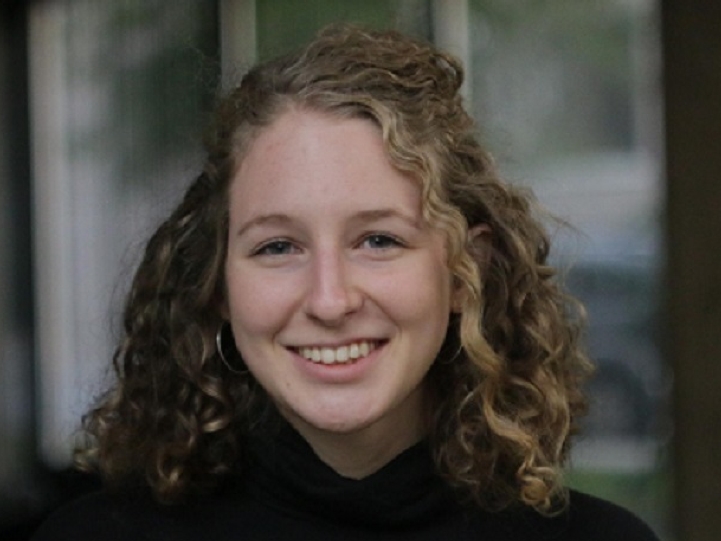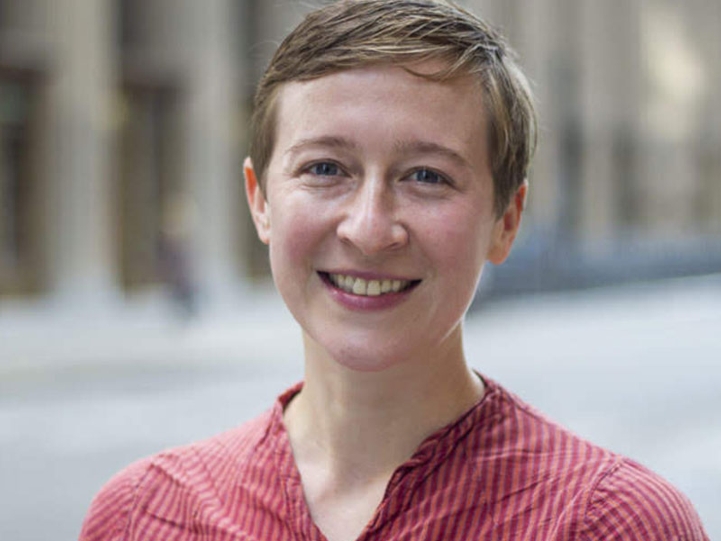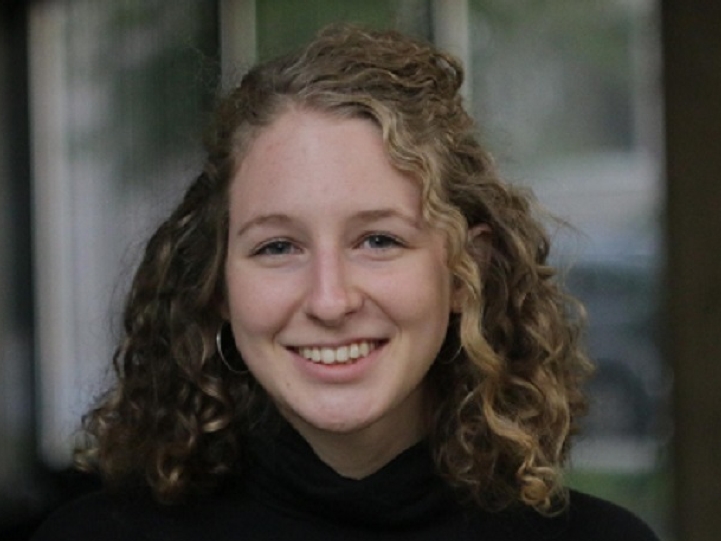
Where Do We Go From Here As a Nation?
February 19, 2022
JCC Connexions, Vol. 8, No. 1, February 2022
Engaging Civic Religious Pluralism: An Ongoing Column in JCC Connexions
Income inequality is at an all-time high, factions fail to agree on the most basic facts, and racial inequity is betraying America’s  promise for citizens of color; this is the sobering description Putnam and Garrett portray of the United States 130 years ago in the opening of The Upswing (2020). The observation that our present reality mirrors much of America’s Gilded Age is some source of solace should we seek to learn from that experience. Putnam and Garrett's meticulous analysis of data and scholarship details the path from 1890s division to immense progress and admirable unity in the mid-20th century. His purpose in this exercise is ostensibly to make a case that we could once again swing from our present civic brokenness into a more functional civil society. We believe that to achieve that in a multi-faith, multi-racial democracy will require individual action, strengthening of local civic engagement, and adapting to the advancements we have seen in the last century including access to virtual spaces of connection and community.
promise for citizens of color; this is the sobering description Putnam and Garrett portray of the United States 130 years ago in the opening of The Upswing (2020). The observation that our present reality mirrors much of America’s Gilded Age is some source of solace should we seek to learn from that experience. Putnam and Garrett's meticulous analysis of data and scholarship details the path from 1890s division to immense progress and admirable unity in the mid-20th century. His purpose in this exercise is ostensibly to make a case that we could once again swing from our present civic brokenness into a more functional civil society. We believe that to achieve that in a multi-faith, multi-racial democracy will require individual action, strengthening of local civic engagement, and adapting to the advancements we have seen in the last century including access to virtual spaces of connection and community.
Individual Action
 As we envision ways in which our society could climb toward wholeness (e.g., equitable opportunities, respectful engagement, shared sense of an expansive “we”), defining the role of individual action is tricky. Charting a path forward requires a balance between empowering people and acknowledging that much of what we’re up against is systemic. The tension between individual power and systems realities is evident in every issue before us, from climate change to educational access, and wage disparity to universal voting (for inspiration on this front, check out Why Voting is Sacred: An Interfaith Response to Protecting Our Democracy). In this equation, Putnam and Garrett’s work is helpful because it provides statistical proof of individuals’ effectiveness. In the past couple of years, it has become easy to be convinced of one’s own efforts’ insignificance. Use of the pronoun “we” instead of “I” in written materials peaked in the 1960s, and fell precipitously to its current all-time low (Putnam& Garrett, 2020, p. 198). As the COVID-19 pandemic has swept the world, exposing and exacerbating the broader problems that shape our lives, one’s individual actions can feel futile. Wearing masks and turning up for booster shots didn’t save us from another wave, and the situation can paint a depressing portrait of collective action problems. The beauty of The Upswing is that it challenges this cynicism.
As we envision ways in which our society could climb toward wholeness (e.g., equitable opportunities, respectful engagement, shared sense of an expansive “we”), defining the role of individual action is tricky. Charting a path forward requires a balance between empowering people and acknowledging that much of what we’re up against is systemic. The tension between individual power and systems realities is evident in every issue before us, from climate change to educational access, and wage disparity to universal voting (for inspiration on this front, check out Why Voting is Sacred: An Interfaith Response to Protecting Our Democracy). In this equation, Putnam and Garrett’s work is helpful because it provides statistical proof of individuals’ effectiveness. In the past couple of years, it has become easy to be convinced of one’s own efforts’ insignificance. Use of the pronoun “we” instead of “I” in written materials peaked in the 1960s, and fell precipitously to its current all-time low (Putnam& Garrett, 2020, p. 198). As the COVID-19 pandemic has swept the world, exposing and exacerbating the broader problems that shape our lives, one’s individual actions can feel futile. Wearing masks and turning up for booster shots didn’t save us from another wave, and the situation can paint a depressing portrait of collective action problems. The beauty of The Upswing is that it challenges this cynicism.
Localized Civic Engagement
The role of civil society organizations in addressing pressing social needs provides historical perspective and present-day hope. During America’s most recent civil society zenith, a large share of Americans were involved in a Rotary Club, a 4-H meeting, or a similar organization (Putnam & Garrett, 2020, p. 117). While these groups were still segregated by America’s divisions, the civil society impact transcended race, class, and gender boundaries. An increasing fraction of Jews were members of B’nai Brith, Jewish women in Hadassah, Black middle-class kids in Jack and Jill, Latino adults in LULAC, and Black adults in the National Urban League (Putnam & Garrett, 2020, p. 118). While the inequality in this time period stunted integrated groups, Americans of many ethnicities and religions were nevertheless involved in their communities.
At its core, The Upswing points to a tension between a toxic individualism that lends itself to isolation and selfishness, and the radical potential for the mobilization of this individual agency in service of collective action and achieving rights and protections. When it comes to individual civil society memberships that proved instrumental in bringing communities together, it is clear that people felt that their presence in these groups mattered. In turn, their organized efforts did succeed in changing some of the systemic factors that marginalized individuals along racialized and gendered lines.
It isn’t inevitable that America will once again move toward a civil-society peak, and in order to get there enough individuals will have to be confident in their impact in order to make a collective difference. Accordingly, one of our guiding questions in this endeavor is: how do we help people to feel that they matter? Putnam and Garrett argue that, at a time of profound social displacement due to geographic mobility, mid-century civil society organizations offered “sociability in a box” that made it easy to connect disparate community members (Putnam & Garrett, 2020, p. 117). In a nation that is separated ideologically by rancorous political divides and physically by a public health crisis, alongside an ongoing loneliness problem, how can we once again foster community?
What We Have That the Post-Gilded Age Didn’t
One answer is to look at institutions who are still functioning in this way. For instance, religious communities continue to be powerful sources of localized connection and support. In the past two years, they’ve served as voting sites, COVID-19 testing and vaccination sites, food pantries, daycares, and preschools. For many immigrant communities and religious minority communities in particular, they provide important cultural connection points. These are crucial in an emerging no-racial-minority nation, which is estimated to occur in 2024 (Brookings, 2018). Finally, religious freedom (freedom from government promoting a religion and freedom to practice one’s religion) continues to be a broadly supported right and value protected by the First Amendment of the U.S. Constitution even as our nation has become more religiously diverse. In a recent poll inquiring about religious exemptions to the COVID-19 vaccine, PRRI and IFYC found 60% of US adults “believe there are no valid religious reasons to refuse a COVID-19 vaccine” yet 40% still “support a blanket religious exemption policy” (Patel & Jones, 2021). The broad commitment for individuals and communities to gather, worship, believe, and live in line with their values remains an important aspect of US culture, which has helped to nurture religious communities even as religious demographics shift.
Another sign of hope is that the past two years of upheaval have pushed people back into hyper-local networks in order to meet their needs. One such example is the Buy Nothing Project, which began in 2013 and gained momentum as people lost work and needed more necessities at home. While the project began in order to encourage gratitude and gifting, the networks quickly connected neighbors who were former strangers up until their time of need in 2020 and beyond (Kowitt 2021). As supply chains crumbled and people tried to avoid the store, neighbors sought out games to occupy their kids, PPE for the immunocompromised, and extra tables for homework and home offices. In many cases, they found it in a buy-nothing group, and have continued to rely on and contribute to their neighbors since then.
Another such example is the precipitous rise of mutual aid networks. These informal collections of neighbors have been around for a long time, and can be traced back to Black and Indigenous collectivist practices. As individuals struggled with the paucity of collective resources in March 2020, mutual aid networks sprung up everywhere. They delivered groceries and other supplies to neighbors who had lost work or who were quarantined. Because these networks often exist without a central organizing force, they facilitate neighbor-to-neighbor connections as people step up to help with each other’s needs.
While both of these examples can be accomplished with paper signs on light posts, most of them have been centered on Facebook and other platforms. While people’s ability to organize with those not geographically close to them can present problems, it can also unite people across time, space, and neighborhoods. Social media and its divisive, radicalizing force is the most obvious factor that confounds a comparison between today and the post-Gilded Age upswing, but it also offers new possibilities. One benefit to online organizing is the newfound ability to mobilize geographically far-flung people toward a common cause. This development is especially critical for minoritized voices denied space in more official channels and organizations. This development further calls for great care, education, and skill in navigating the seemingly vast virtual world (IFYC 2021).
Questions That Still Guide Us
As we consider the state and future of human connection, these non-traditional ventures present opportunities and challenges. Our guiding question here is how do we as a community encourage and renew excellent civic ventures? The above examples provide insight into how communities can organize outside of the traditional power structures which have largely failed to encourage civic oneness.
While Putnam chronicles individual actions and systemic changes that gave rise to the upswing, his telling can give the impression that this progress was predestined. The statistical swings from inequality to parity look almost graceful on the graphs. However, these trend lines belie millions of individuals’ efforts over the course of decades to reform broken systems and care for their communities. They represent votes for the New Deal, footsteps in civil rights marches, people on picket lines, and attendance at the local Kiwanis Club. In an age in which individuals have been asked to watch their own backs, how can we once again collectivize our individual efforts? By looking at some past and present examples, it becomes clear that we need to renew individuals’ confidence in their own altruistic power and invest in networks that allow isolated individuals to address the systemic factors that have separated us.
References
Arnold, A. (2020, September 30). So you want to get involved in mutual aid. The Cut. Retrieved January 14, 2022, from https://www.thecut.com/2020/09/what-exactly-is-mutual-aid-how-to-get-involved.html
Cacioppo, J. T., & Cacioppo, S. (2018). The Growing Problem of Loneliness. The Lancet, 391(10119), 426. https://doi.org/10.1016/s0140-6736(18)30142-9
Frey, W. H. (2020, July 16). The nation is diversifying even faster than predicted, according to new census data. Brookings. Retrieved January 14, 2022, from https://www.brookings.edu/research/new-census-data-shows-the-nation-is-diversifying-even- faster-than-predicted/#interfaith.
IFYC. (2022, January 12). Retrieved January 14, 2022, from https://ifyc.org/interfaith-digital
Kowitt, B. (2021, July 30). How the pandemic fueled the rise of the 'buy nothing' economy. Fortune. Retrieved January 14, 2022, from https://fortune.com/2021/07/30/buy-nothing-facebook-group-pandemic-gift-economy-free-stuff/
Patel, E., & Jones, R. P. (2021, December 21). Americans support a high bar for religious exemptions to vaccines. Interfaith America. Retrieved January 14, 2022, from http://ifyc.org/article/americans-support-high-bar-religious-exemptions-vaccines
Putnam, R. D., & Garrett, S. R. (2021). The Upswing: How we came together a Century ago and how we can do it again. Simon and Schuster.
Why voting is sacred: An interfaith response to protecting our democracy. (2022). Retrieved January 14, 2022, from https://www.youtube.com/watch?v=tyMHwfOYU-U.